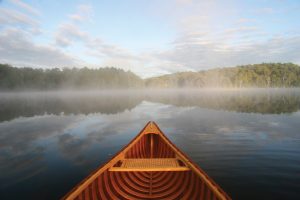Do you have a real Christmas tree? Once the holiday is over, what will you do with it? If you live in town, you can put it out for pick up, but it will likely never have a useful purpose again. However, if you live in a rural area, there are options that will provide a secondary use for it.
University of Illinois Extension specialists say people who maintain bird feeders can help winter birds by creating a small windbreak with a single tree. Put the old Christmas tree on the northwest side of bird feeders that are exposed to the wind. The tree will provide protection for the birds and also help keep birdseed from blowing away. However, don’t place the tree too close to the feeder. You don’t want it to become a hiding place for predators like the neighborhood cat.
Another option is to place your tree in the backyard, anchor it with a steel fencepost, and then decorate it as a food source for wildlife. This can lengthen your family’s enjoyment of the tree and attract an assortment of birds, chipmunks and squirrels to your yard. Strung popcorn and/or cranberries, pinecones smeared with peanut and sunflower seeds, apple rings and orange slices can be placed on it as a wildlife food source.
For farm ponds, Christmas trees can be connected by cable and anchored to concrete blocks and placed in 8 to 10 feet of water. The trees serve as places where small fish can hide from larger predator species.
Christmas trees also make excellent material to construct brush piles to provide cover for a variety of wildlife. Some good locations for brush piles in rural areas are near field borders and woodland areas. An ideal brush pile is about 6 feet high and 15 to 20 feet in diameter. If the brush pile is smaller than that, predators can often get into them. If larger than what is recommended, it loses some of its effectiveness.
Another environmentally-sound way to dispose of your tree is to chip it up with a chipping machine to use as landscaping mulch. The mulch can be used in the garden or planting beds to help reduce weeds, moderate soil temperature and retain moisture. If you do not have a chipper, one can usually be rented from local equipment rental stores.
Never burn a Christmas tree in the fireplace! The dryness of the tree, along with resins in the needles, makes it extremely flammable. Even if you have an outside location in a rural area, extreme caution must be taken if burning is used to dispose of it.
Curl up with a good book and a cup of cocoa and enjoy watching the wildlife.









